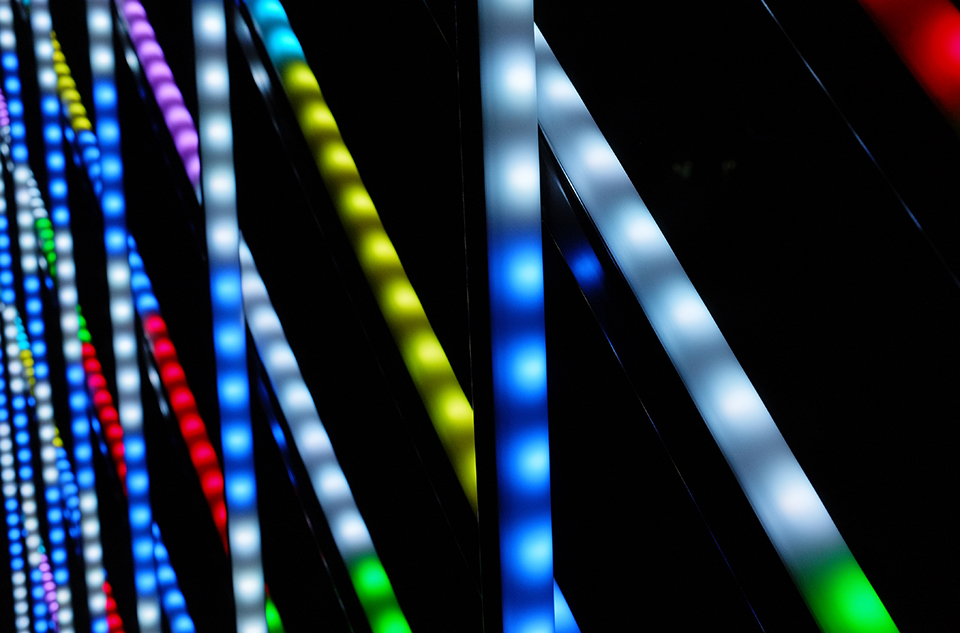Time:2025-05-27
The integration of smart technology with lighting design has reached new heights with smart app-controlled RGB neon flex lighting systems. These systems combine the vibrant aesthetics of neon with intelligent customization, enabling users to dynamically alter colors, patterns, and brightness via smartphones or tablets. This article examines their transformative potential across industries, technical innovations, and strategies for maximizing their impact in residential, commercial, and public spaces.
Core Features Driving Adoption
Smart app-controlled RGB neon flex systems are defined by their advanced capabilities:
Dynamic Color Customization: Seamlessly transition between millions of RGB hues or pre-set themes (e.g., "sunset," "aurora") to match moods or events.
Wireless Control: Adjust settings remotely via iOS/Android apps, eliminating the need for physical switches or dimmers.
Scene Automation: Program schedules (e.g., sunrise simulations, bedtime dimming) or sync lighting with music, movies, or gaming.
Cross-Platform Integration: Compatibility with smart home ecosystems (Amazon Alexa, Google Home, Apple HomeKit) for voice-activated commands.
These features empower users to create immersive environments that adapt in real time to their preferences.

Applications Transforming Spaces
Residential Innovation
Mood-Based Living Rooms: Shift from energizing reds during parties to calming blues for movie nights.
Sleep Optimization: Automate warm, dimmed lighting in bedrooms to align with circadian rhythms.
Commercial and Retail
Brand Activation: Retailers use color-shifting neon to highlight promotions or sync with social media campaigns.
Hospitality Experiences: Hotels employ dynamic lighting in lobbies or suites to enhance guest personalization.
Public and Artistic Use
Interactive Installations: Museums deploy app-controlled neon that responds to visitor movement or touch.
Urban Safety: Illuminate bike lanes or pedestrian paths with motion-activated brightness adjustments.
For example, a luxury gym chain uses RGB neon flex systems to match lighting to workout intensity—cool tones for yoga, vibrant pulses for HIIT sessions.
Technical Advancements Enabling Intelligence
High-Density LEDs: Ensure uniform color distribution and brightness across flexible silicone strips.
IoT Connectivity: Cloud-based controls enable multi-device synchronization and remote access.
Energy Monitoring: Track power usage via app dashboards to optimize efficiency and reduce costs.
Modular Design: Cuttable strips with solderless connectors simplify installation and repairs.
Installation and User Experience Best Practices
Wireless Planning: Use mesh networks or Wi-Fi extenders to ensure stable connectivity in large spaces.
Zoning Strategies: Divide installations into sections (e.g., walls, furniture) for granular control.
User Education: Provide tutorials on app features like gradient creation, scene saving, and shared access.
Maintenance: Update firmware regularly to access new features and security enhancements.
Emerging Trends and Innovations
AI-Powered Adaptation: Systems that learn user preferences and auto-adlighting based on time, weather, or biometric data (e.g., stress levels).
AR/VR Integration: Visualize lighting designs in 3D via augmented reality apps before installation.
Sustainable Tech: Solar-powered neon flex kits and biodegradable materials for eco-conscious projects.
Haptic Feedback: Lights that pulse or change color in response to touch or environmental sensors.
Overcoming Implementation Challenges
Connectivity Issues: Prioritize systems with dual-band Wi-Fi or Bluetooth 5.0 for reliable performance.
Aesthetic Balance: Avoid over-saturation by pairing neon with neutral decor and indirect lighting.
Data Security: Opt for brands with encrypted app frameworks to protect user data from breaches.
Conclusion
Smart app-controlled RGB neon flex lighting systems are redefining illumination as an interactive, adaptive medium. By merging cutting-edge technology with artistic expression, they offer unparalleled opportunities to enhance ambiance, engagement, and energy efficiency. For businesses, these systems elevate brand differentiation; for homeowners, they enable deeply personalized environments.
To stay competitive, collaborate with suppliers offering scalable solutions, robust app support, and future-ready updates. As smart cities and connected homes evolve, RGB neon flex will remain at the forefront of lighting innovation—transforming spaces into dynamic, responsive experiences.